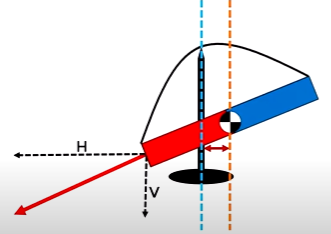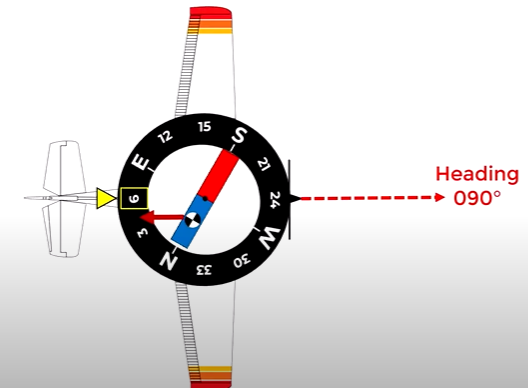I was trying to find out what exactly causes magnetic compass acceleration errors, and I found two completely different and contrasting explanations online (both are supported by an equal amount of reliable sources).
Explanation 1: Reference:
(starting at 3:28). Summary: when on a east or west heading (in the northern hemisphere), the compass’s North end dips down due to magnetic dip. Then CoG of the compass swings to the other side (South side) so the other half ends up heavier and with more inertia.
This image represents the compass mounted on a pivot point, with the magnet shown.
So when you change speed, that heavier end (the South end), having more inertia thus more resistance to speed change, swings forwards/backwards depending on deceleration or acceleration, and compass will indicate turn to the North/South.
 Acceleration
Acceleration
 Deceleration
Deceleration
Explanation 2: Reference: https://drive.google.com/file/d/1sgfdgSFPfw0jtNaH2kUkIgy1aOtDl_tn/view (page 4-6: page 6 in particular but pages 4-5 provide a backgrounder)
Summary: I’ve also seen some people say that the compass card’s center of gravity is below its pivot point, thus acceleration causes the bottom-heavy compass card to tilt forward (bottom swings back), and deceleration causes the compass card to tilt backward (bottom swings forward).
The magnetic dip then makes the North end of the compass want to dip downward. At that forward/backward tilted angle, dipping downward means the compass turning so that the North end of the magnet is at a lower point. Hence the compass will indicate turn to the North when accelerating and South when decelerating.

The difference I noticed between the two explanations is that as seen from the pics, the first explanation thinks the compass card is tilted sideways as viewed by pilot (North end down) due to magnetic dip. While the second explanation thinks the compass card is tilted forward/back due to compass card CoG being at the bottom (and magnetic dip comes in after to make the compass card turn). So my question is: which explanation is correct? Could they both be correct?
